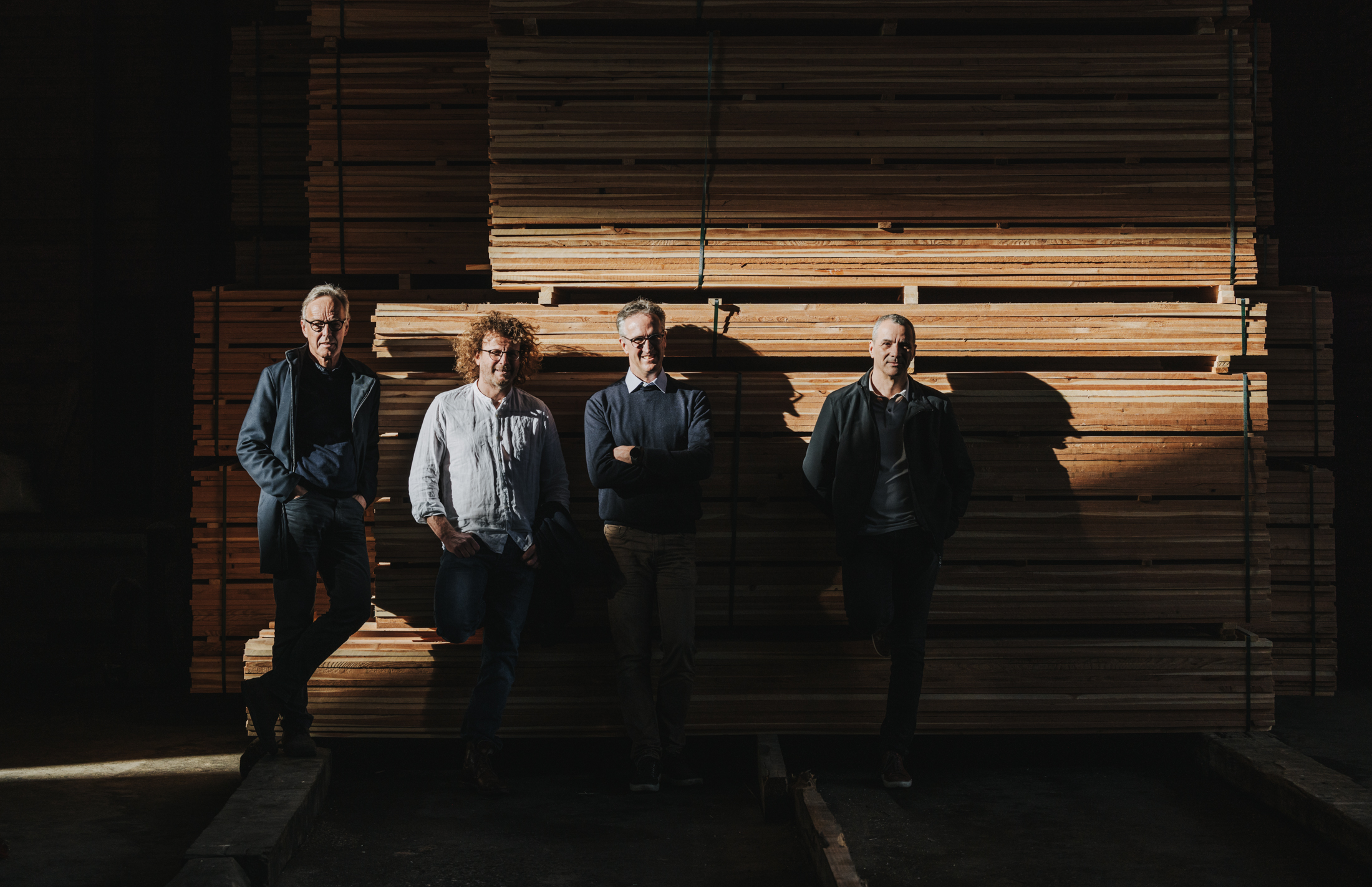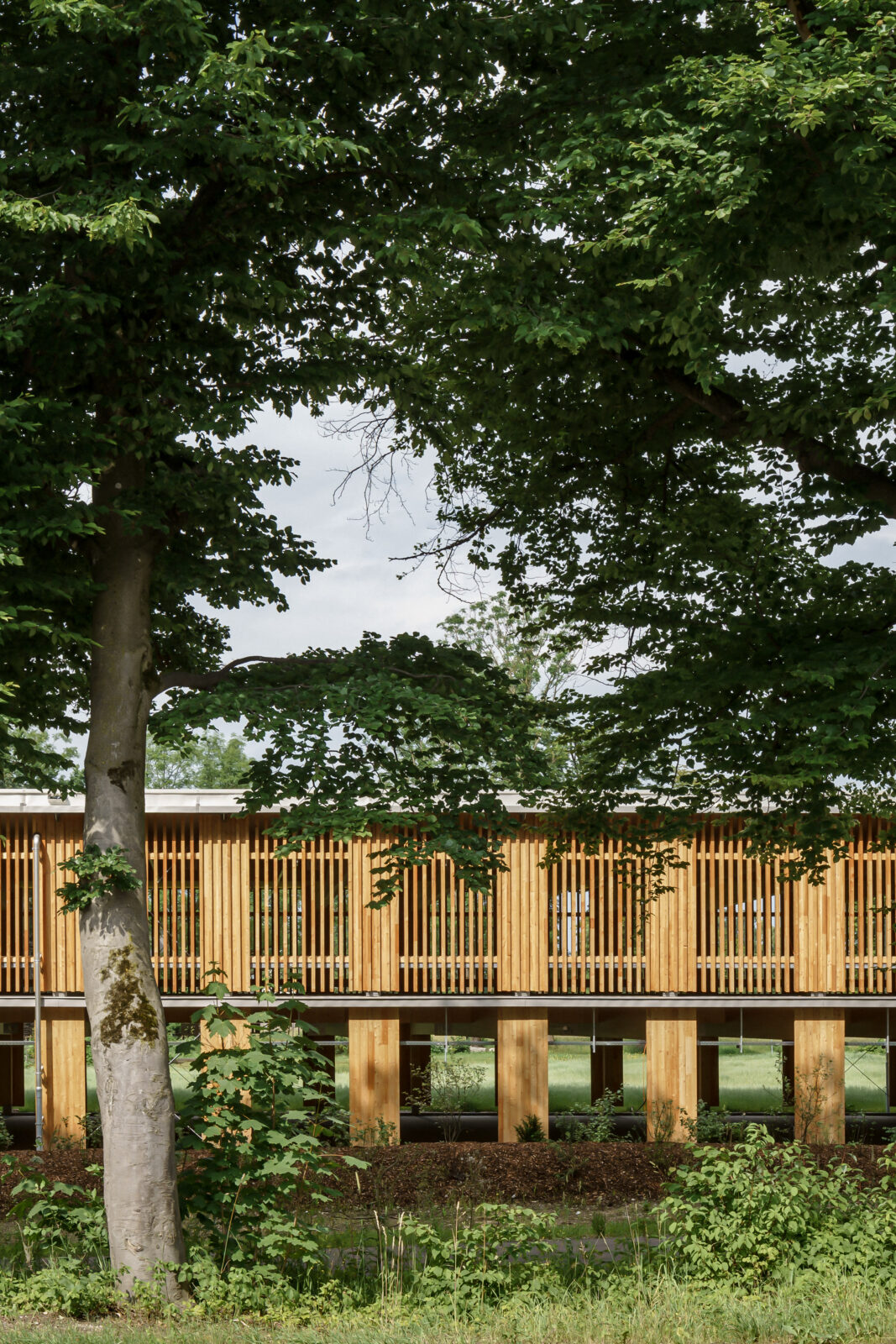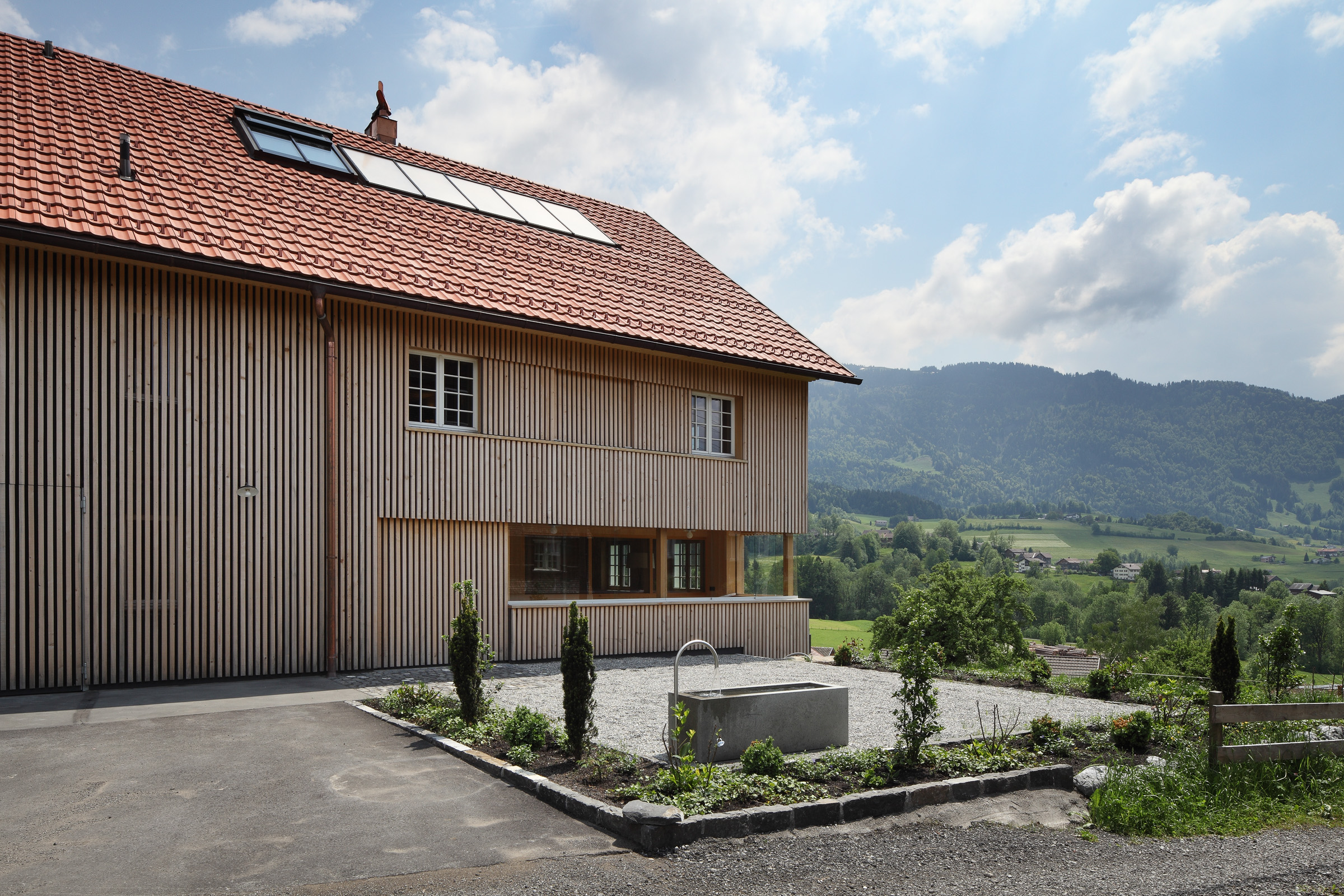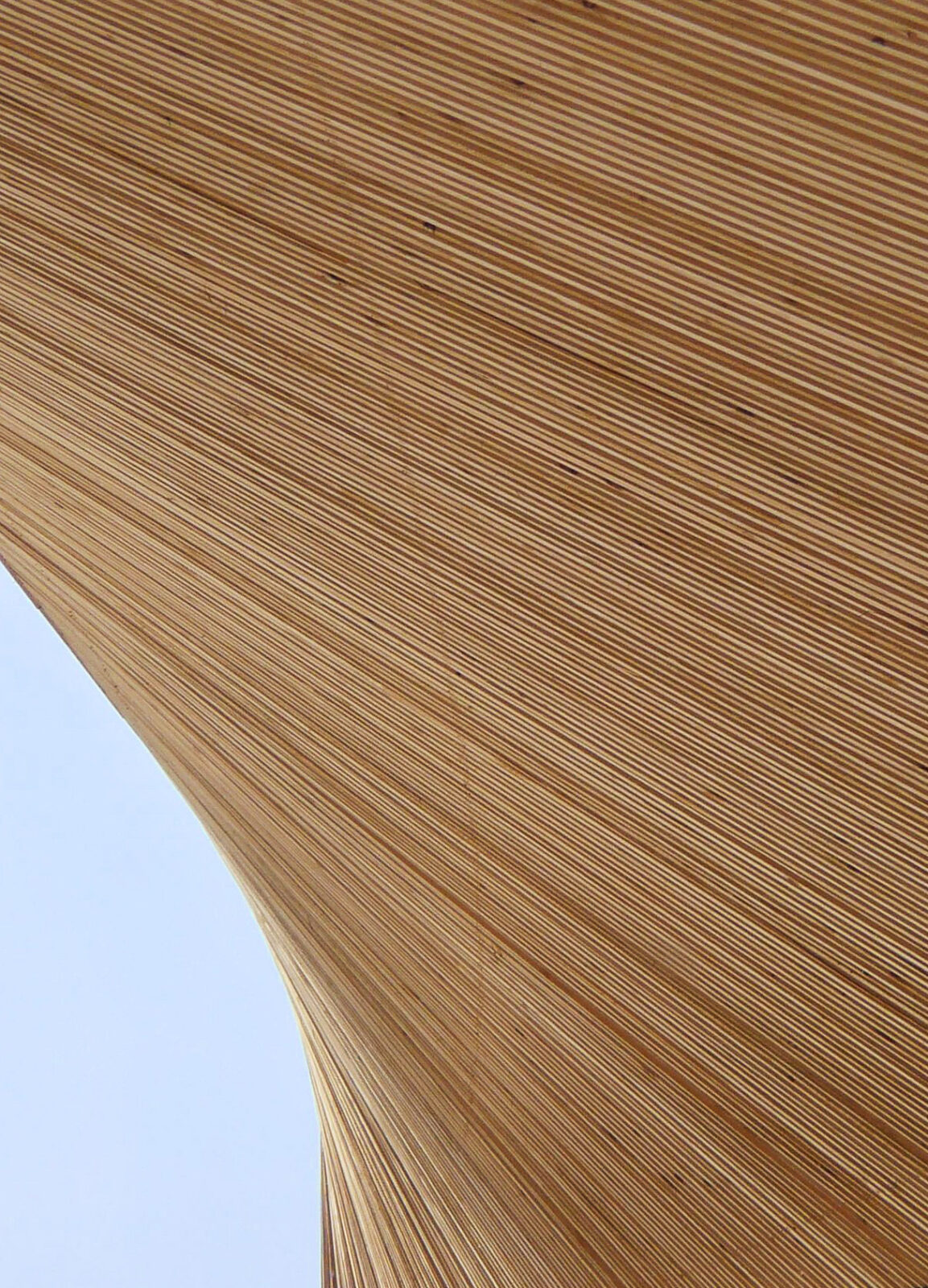We are architects with heart and soul. We know that architecture is not grounded in itself.

Our architecture is deeply connected to the cultural landscape of Vorarlberg, where natural and cultural elements — such as materials, topography, history, and craftsmanship — interact. Wood, with its unique properties and versatility, plays a central role. Tradition and innovation coexist, fostering a dynamic approach. Both new and existing buildings are part of this evolving landscape, which we respect but never dominate. This is our ongoing commitment and development.
PHILOSOPHY
wOOD
Building material of the future
This is how timber is described for many reasons. Our location gives us direct access to abundant resources, allowing timber to be sourced and processed economically. As a renewable building material, it not only locks in CO2 but reduces it if the stock is replanted. Every building lifecycle assessment benefits from the use of timber. Timber brings diversity and greater potential to design and the built environment. Timber offers design, and the built environment, diversity and greater potential.


CRAFT
The basis of the built environment
Architecture, as Vitruvius says in his original text, combines ‘a wealth of knowledge in abundance.’ In addition to theory, it is the craft — ‘the mechanical ability acquired through constant practice, to make a building out of any kind of material according to the specified requirements.’ Only those who have thoroughly mastered both receive professional recognition and esteem as architects. The role of craftsmanship is further emphasized by William Morris and the ‘Arts and Crafts’ movement, which significantly influenced 20th -century modernism. We are committed to this tradition.
Our architecture is inspired by timber construction – logical in its design, ecological in material choice, balanced in atmosphere, and proven in execution.

ARCHITECTURE
A synthesis of elements
Architecture must meet both functional and aesthetic requirements, combining strength and durability with usability and beauty. Each of these qualities is essential, and none takes precedence over the others. Unlike other arts, architecture requires a balanced synthesis of knowledge, experience, cultural traditions, and artistic intuition. The quality of a design is measured by how well these elements harmonize with each other.
